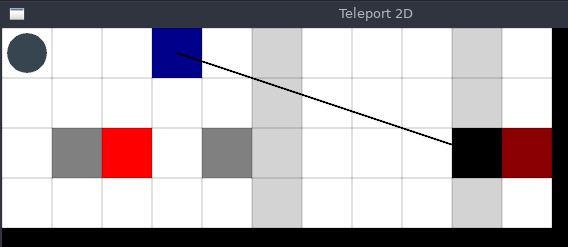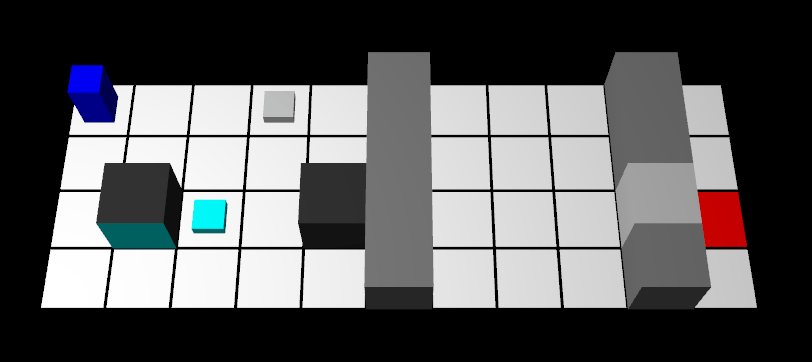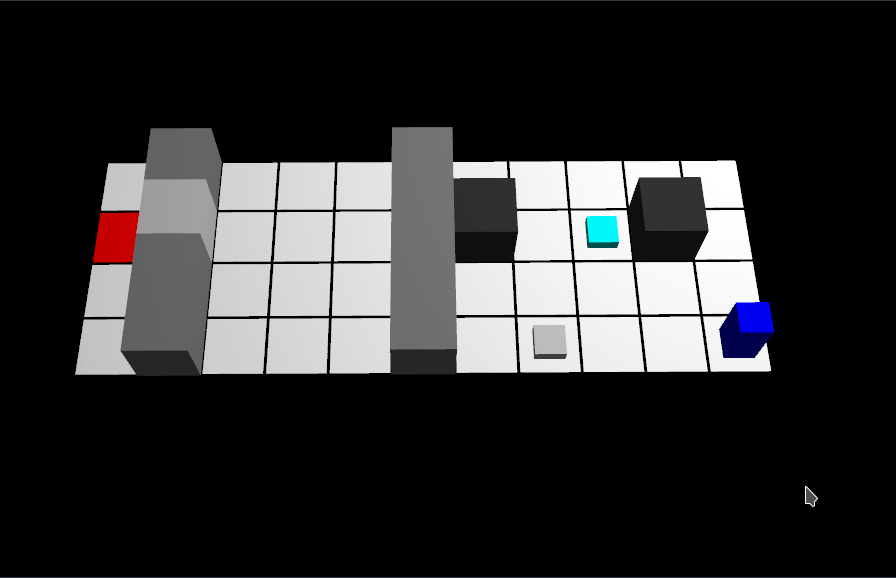
So I'm developing a puzzle game about teleportation through portals. Yes, it probably sounds like something you've played before, but this one (probably) won't have a lot of physics and will be played on a 2D grid.
The game doesn't have a name yet. So I will call it The game for now.
I am not sure what the final look and feel will be, but I'm thinking a semi-open world where you encounter the puzzle as you explore. My inspiration for the game were (non-exhaustively): - Monster's Expedition for its interesting mechanics and nice look, - The Witness, because I love that game, - and obviously Portal
At first, I had the idea of making a game where you can teleport anywhere in your line of sight. But it turned out to be too hard to make good levels because the player could only teleport to platforms that are "under" you. Then I tried switching to a 2D top-down view where the same mechanic applied. However the teleportation turned to be way too powerful, which made it too hard to design challenging levels.
So my solution was to merge that idea with Portal's... portals. And also to put the player on a grid to reduce the degrees of freedom, hence make it easier to design levels.
More details on the mechanics:
By the way, I took a lot of tips from that series of video by Elyot Grant about puzzle design. Highly recommended.
I first developed a prototype in Python (with Arcade), which allowed me to explore different ideas quickly and zero-in on a specific set of mechanics that allows interesting levels.

For the rest of the development, I will switch away from Python and use Zig instead. Why Zig and not something like C++ ? Because I like to try something new, and Zig is a great compromise between being low-level and encouraging correctness. Time will tell if it was a wise choice to start a long-term project with such a young and unstable language. But I'm hopeful and supportive of Zig's team and their core values.
All the basic mechanics are implemented. It just looks very raw but it will allow me to work on designing more levels.
This week I focused on making the game look slightly better by adding some animations to the movement of the player and the blocks. It makes it easier to see what is happening, especially when you go through a portal.
The animation is made smooth by using the smootherstep function by Ken Perlin. It is a sigmoid-style easing function that make the animation start slow and end slow.

The undo feature makes it easy for the player to explore different solution without restarting the level if he gets stuck.
My implementation of undo is based on keeping a stack of game state. Appending to the stack on every move and popping out the last state for undo. Reset is achieved by taking the first element of the stack.
I can do that since the state is very small, it contains only the player's and the blocks' positions. We'll see how it evolves.

I have a problem in my game design. Since there are 3D blocks that can have portals on all sides, there will be some portals that the player can't see. How do I make them visible to the player ? There are a few solutions:
I went with the third solution because it is the easiest to implement, which allows me to move on to other problems.

I'm planning to design more puzzles to test these mechanics. It is also a great way of discovering the consequences of these mechanics (often because of bugs). By discovering these consequences, you can make more interesting levels that present these consequences to the player. More info in this video by Jonathan Blow and Marc ten Bosch.
--
Published on 2021-01-19